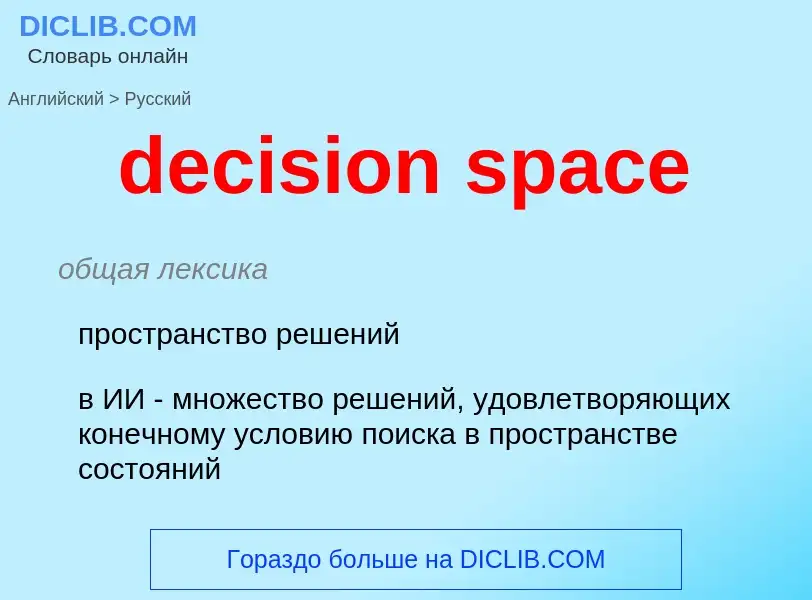Übersetzung und Analyse von Wörtern durch künstliche Intelligenz ChatGPT
Auf dieser Seite erhalten Sie eine detaillierte Analyse eines Wortes oder einer Phrase mithilfe der besten heute verfügbaren Technologie der künstlichen Intelligenz:
- wie das Wort verwendet wird
- Häufigkeit der Nutzung
- es wird häufiger in mündlicher oder schriftlicher Rede verwendet
- Wortübersetzungsoptionen
- Anwendungsbeispiele (mehrere Phrasen mit Übersetzung)
- Etymologie
decision space - Übersetzung nach Englisch
общая лексика
пространство решений
в ИИ - множество решений, удовлетворяющих конечному условию поиска в пространстве состояний
Смотрите также
пространство решений
Definition
Wikipedia

Before the Apollo 11 Moon landing in 1969, NASA began studies of Space Shuttle designs as early as October 1968. The early studies were denoted "Phase A", and in June 1970, "Phase B", which were more detailed and specific. The primary intended use of the Space Shuttle was supporting the future space station, ferrying a minimum crew of four and about 20,000 pounds (9,100 kg) of cargo, and able to be rapidly turned around for future flights.
Two designs emerged as front-runners. One was designed by engineers at the Manned Spaceflight Center, and championed especially by George Mueller. This was a two-stage system with delta-winged spacecraft, and generally complex. An attempt to re-simplify was made in the form of the DC-3, designed by Maxime Faget, who had designed the Mercury capsule among other vehicles. Numerous offerings from a variety of commercial companies were also offered but generally fell by the wayside as each NASA lab pushed for its own version.
All of this was taking place in the midst of other NASA teams proposing a wide variety of post-Apollo missions, a number of which would cost as much as Apollo or more. As each of these projects fought for funding, the NASA budget was at the same time being severely constrained. Three were eventually presented to Vice President Agnew in 1969. The shuttle project rose to the top, largely due to tireless campaigning by its supporters. By 1970 the shuttle had been selected as the one major project for the short-term post-Apollo time frame.
When funding for the program came into question, there were concerns that the project might be canceled. This led to an effort to interest the US Air Force in using the shuttle for their missions as well. The Air Force was mildly interested but demanded a much larger vehicle, far larger than the original concepts, which NASA accepted since it was also beneficial to their own plans. To lower the development costs of the resulting designs, boosters were added, a throw-away fuel tank was adopted, and many other changes were made that greatly lowered the reusability and greatly added to the vehicle and operational costs. With the Air Force's assistance, the system emerged in its operational form.


![DC-3]] concept employed conventional straight wings. DC-3]] concept employed conventional straight wings.](https://commons.wikimedia.org/wiki/Special:FilePath/Faget shuttle concept P208.jpg?width=200)
![Original North American Rockwell Shuttle [[delta wing]] design, 1969: fully reusable, with a flyback manned booster Original North American Rockwell Shuttle [[delta wing]] design, 1969: fully reusable, with a flyback manned booster](https://commons.wikimedia.org/wiki/Special:FilePath/North American Rockwell P333.jpg?width=200)

